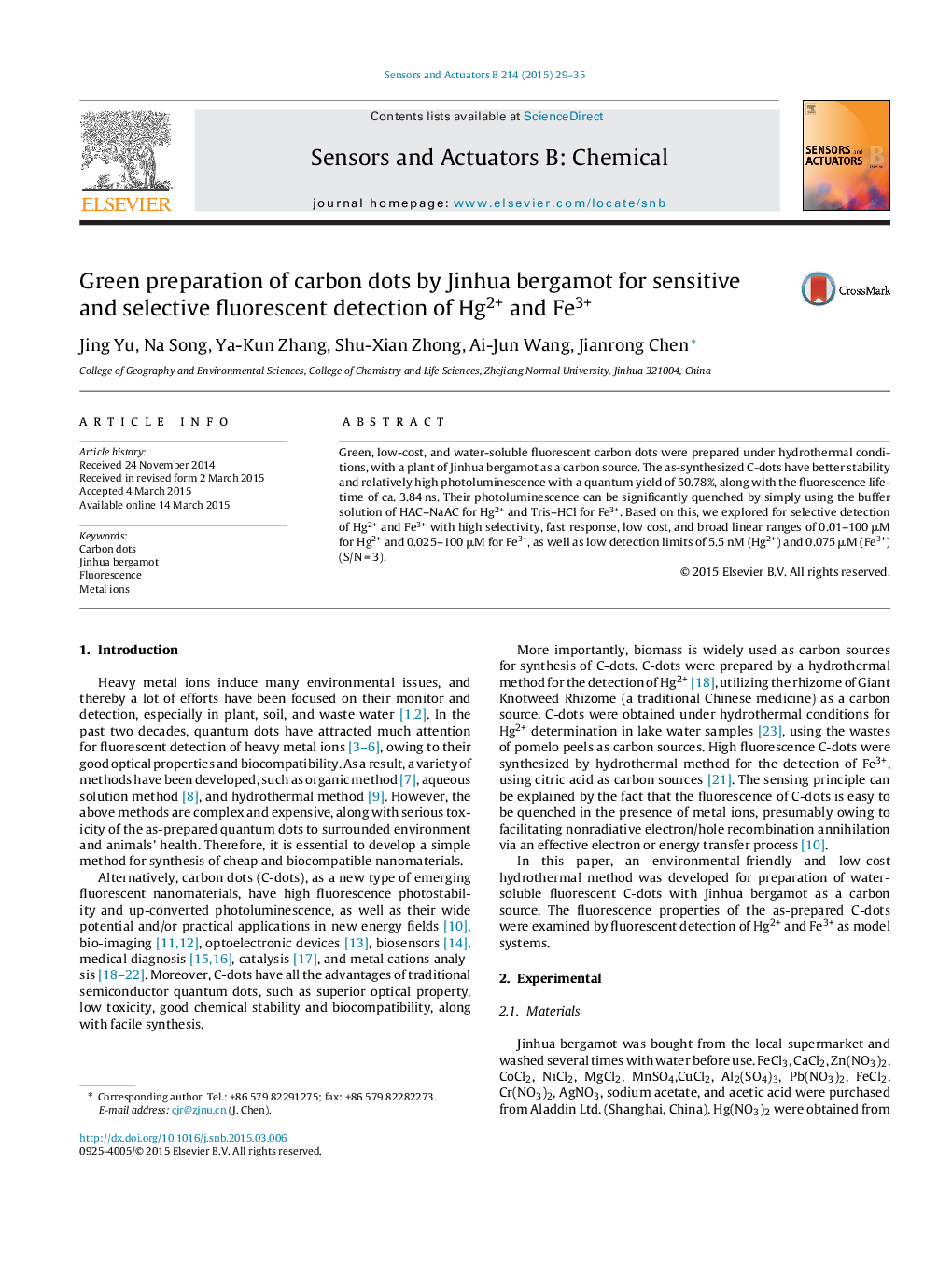| Article ID | Journal | Published Year | Pages | File Type |
|---|---|---|---|---|
| 741681 | Sensors and Actuators B: Chemical | 2015 | 7 Pages |
•A green and low-cost hydrothermal method was developed for synthesis of water-soluble fluorescent C-dots.•Jinhua bergamot was used as a carbon source.•The as-prepared C-dots displayed a bright blue fluorescence and high quantum yield of 50.78%.•The C-dots were explored for fluorescent detection of Hg2+ and Fe3+ with high sensitivity and selectivity.
Green, low-cost, and water-soluble fluorescent carbon dots were prepared under hydrothermal conditions, with a plant of Jinhua bergamot as a carbon source. The as-synthesized C-dots have better stability and relatively high photoluminescence with a quantum yield of 50.78%, along with the fluorescence lifetime of ca. 3.84 ns. Their photoluminescence can be significantly quenched by simply using the buffer solution of HAC–NaAC for Hg2+ and Tris–HCl for Fe3+. Based on this, we explored for selective detection of Hg2+ and Fe3+ with high selectivity, fast response, low cost, and broad linear ranges of 0.01–100 μM for Hg2+ and 0.025–100 μM for Fe3+, as well as low detection limits of 5.5 nM (Hg2+) and 0.075 μM (Fe3+) (S/N = 3).
Graphical abstractAn environmental-friendly and low-cost hydrothermal method was developed for synthesis of water-soluble fluorescent C-dots with Jinhua bergamot as a carbon source. The fluorescence of the C-dots can be served as a fluorescent probe for the detection of Hg2+ or Fe3+ with high sensitivity and selectivity, respectively.Figure optionsDownload full-size imageDownload as PowerPoint slide
